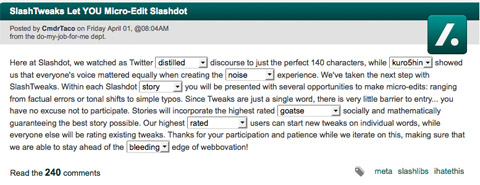Twitter’s role during, well, anything worth talking about has been pretty well defined. Whether it’s the Vancouver riots, natural weather disasters in Missouri and Alabama, discussing Dirk Nowitzki’s NBA Finals performance, or simply responding to a popular hashtag (rise & grind, anyone?), the Twitter platform clearly generates a great deal of content. The thing is, being aware of the volume and “seeing” the content in action — in other words, an animated simulation of tweets being sent — is another thing entirely.
The visualization makes you respect the process a little more, and thanks to the official Twitter blog, we know have access to a visualization of tweets that were sent during the early moments of Japan’s devastating earthquake. While one would expect Twitter use to be very high during such an event, seeing it action is a little staggering, but then again, communications obviously ramp up into the overdrive department during natural disasters. Knowing and seeing are two different things, especially in the case of mass communications, something the Twitter platform has clearly become.
Before the video, Twitter offers an explanation of what we’re about to see:
On Twitter, we saw a 500 percent increase in Tweets from Japan as people reached out to friends, family and loved ones in the moments after the earthquake. The video below shows the volume of @replies traveling into and out of Japan in a one-hour period just before and then after the earthquake. Replies directed to users in Japan are shown in pink; messages directed at others from Japan are shown in yellow.
The post also reveals that, during the initial stages of the Japanese earthquake, the volume of tweets being sent was up to 5000 tweets per second on five different occasions. If maintained for a full hour, the would result would be 18 million additional tweets to read.
The video, which is courtesy of Twitter’s Flickr page:
The increase of tweets being sent right after the earthquake hits is impressive to look at, although, when you consider what it signifies, thoughts quickly turn to the content of the tweets being sent. It’s doubtful many LOLs were being tweeted, unless a recipient was acting like a typical Internet troll. There’s another video that shows what Twitter refers to as the “spread of information” an hour after the earthquake struck. It, too, does a great job of capturing and visualizing the sheer amount of data being sent back and forth. The red-colored lines represent tweets coming from Japan and the green lines represent re-tweets.
Day after day, we’re reminded of the negative aspects of social media, thanks to unlimited amount of knuckleheads, especially those in the public eye, who don’t understand the concept of filtering yourself when it comes to public consumption. Fortunately, videos like these exist, and they do a great job of showing the positive benefits of social media.
















